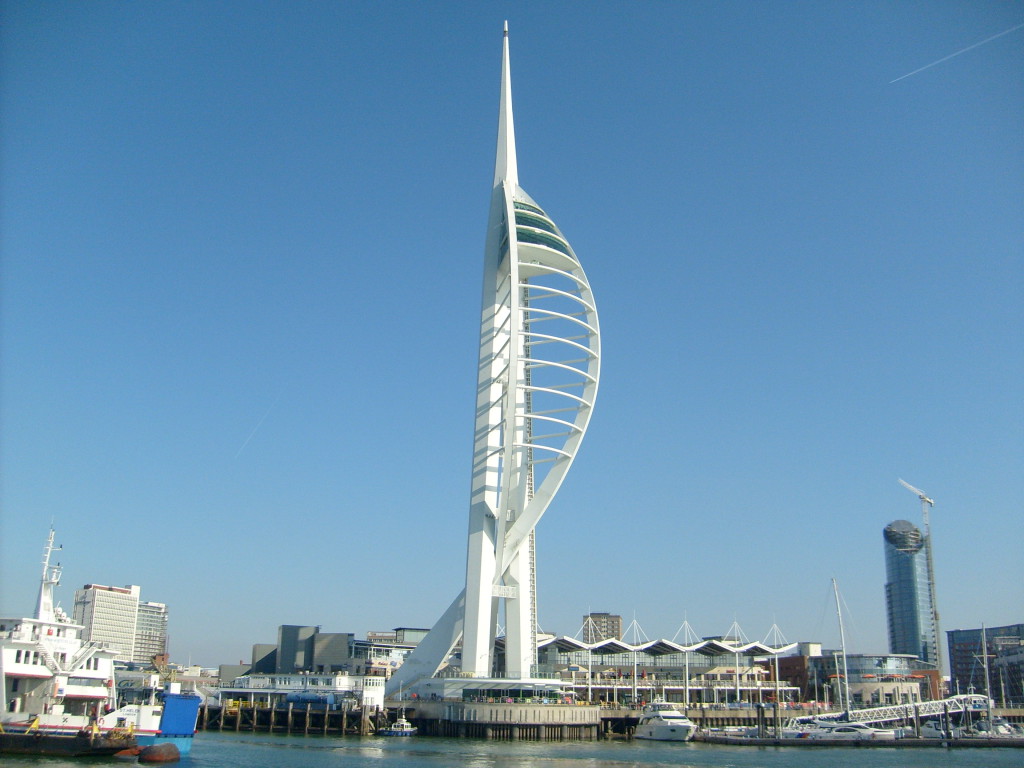In the south of England in the county of Hampshire there is a small town and the famous seaport of Portsmouth. Most of the city is located on the island of Portsea, so often Portsmouth is defined as the only island city in the UK.
Langstone Harbor is located to the east of the city, and the beautiful Portsmouth Harbor is to the west. In the northern part, there is a magnificent view of the city from Portsdown Hill. Due to the geographical position of the city of Portsmouth has long been one of the most important bases of the British Navy. It is with the history of British navigation that the rich history of the city of Portsmouth is connected.
The only island city in England - Portsmouth
History of the city
The history of the city dates back to the time of the Roman settlements in England. Even before the shallowing of the English Channel, the port was located in Portchester, where the ruins of a Roman stone fortress have been preserved.
Later (in the 11th-12th centuries) on the site of the fortress, the feudal castle of Portchester was built with a one-story stone guard tower, the history of which is great and important for the city.
First it was used as a fortification, then as a prison: in the 17th century, prisoners captured during the Second Anglo-Saxon War were imprisoned here, later - captured during the War of the Spanish Succession, in the 19th century - the French captured during the war with Napoleon.
The dead captives were buried right on the coast, which at the moment is under water at high tide. It is not uncommon for locals and tourists to see the remains of deceased prisoners after severe storms.
In the middle of the 15th century, a bishop was killed by sailors near the castle, who did not pay them a salary, after which the city was anathematized. As the legends say, about 50 years after that, the city was haunted by misfortunes and misfortunes.
A city charter directly to Portsmouth was issued back in 1194 by Richard the Lionheart, who proposed to hold a fair on this site. This charter was in effect until 1627.

Portsmouth gained great importance as a ship port during the reign of the Tudors. A ship dock was founded here in 1496, which expanded to 120 hectares in 1698. Most of the people of Portsmouth worked at this dock.
Now the ships known to many tourists who are interested in history are exhibited in the dry dock. One of them is the English karakka "Mary Rose", built in 1510. The ship is known for the fact that during the war with the French it sank. They unsuccessfully tried to raise him to the surface, but at first technology did not allow this.
Later, it was possible to raise the ship from the bottom literally in parts, which are now exhibited in the museum. Another notable historic vessel based in Portsmouth is the Royal Navy ship HMS Victory. This ship took part in significant historical battles of the English fleet, including the famous Battle of Trafalgar.
It was on board this ship that Admiral Nelson was mortally wounded. Since 1922, the ship has been permanently in the port of Portsmouth. Now it has been turned into a museum and looks exactly the same as it was during the Battle of Trafalgar.
In World War II, Portsmouth was seriously damaged due to constant bombing. Both residential buildings and historic public buildings were damaged. After the war, the city was restored by brutalist architects.
Modern Portsmouth
Currently, Portsmouth is of great importance for the country's economy. Some historical monuments are still preserved in Portsmouth, many buildings attract tourists with their architecture, new interesting sights appear.
Many sights are connected with the sea and reflect the city's history as an important seaport. So, most often acquaintance with the city begins with the Spinnaker Tower, 170 meters high, which is made in the form of a sail. From the observation deck at the top of the tower, you can see the whole area and the city of Portsmouth itself.

The historic ships Mary Rose and HMS Victory, described above, are moored at the shipyard near the tower. The first ship, the hull of which is completely made of iron, is also presented here - HMS Warrior 1860. Vintage ships can be seen at the Gosport Submarine Museum, where you can also visit the submarine.

A few more interesting maritime museums are the Museum of the Royal Marines, the Museum of the History of the Shipyards and the Museum of the Royal Navy.
Among the architectural structures that attract the attention of tourists, Wentworth Gardner House stands out, as well as houses built in the 18th-19th centuries. Some houses are open for visits and are interesting not only for their external appearance, but also for their interior decoration, where you can see antiques and works of art.

Among the religious sites, the most attractive for tourists are the Cathedral of St. Thomas and the Roman Catholic Cathedral of St. John the Evangelist.

Portsmouth is famous for having lived in it. The house where he lived has been converted into a museum and is considered a landmark of the city. Now the atmosphere that was during the life of the writer has been recreated there, his huge library and Dickens' manuscripts are also kept here.

Those who love to enjoy nature should definitely visit the local Staunton Park, which is suitable for family holidays: there are a huge number of playgrounds for children, as well as a zoo, adults can relax in a cafe or while walking along the numerous walking or cycling paths in park.
Here is the Blue Reef Aquarium (Blue Reef Aquarium), where you can watch the inhabitants of the underwater world, as well as feed friendly fish.

For lovers of extreme recreation and attractions, the Leisure Island amusement park is suitable. You can learn how to play golf, which is beloved by aristocrats, at the local golf club.
